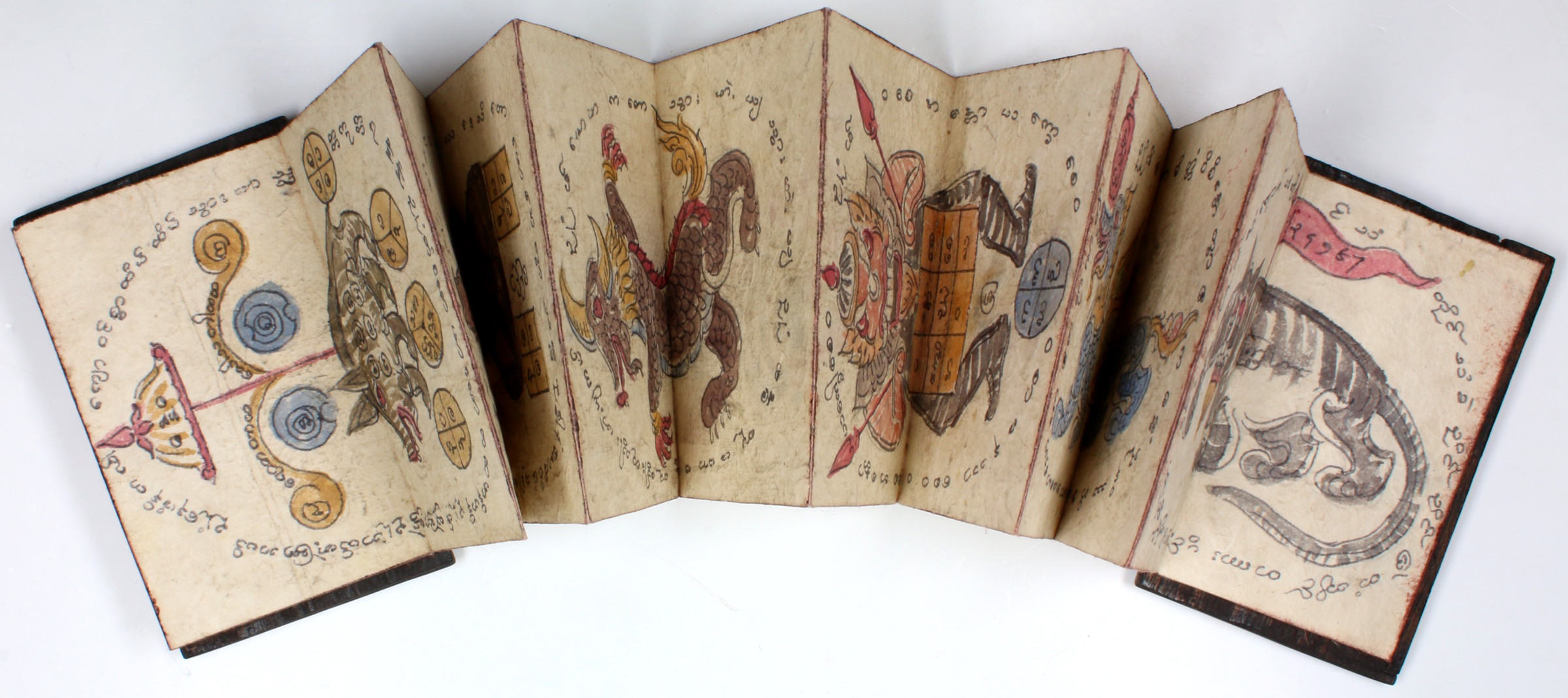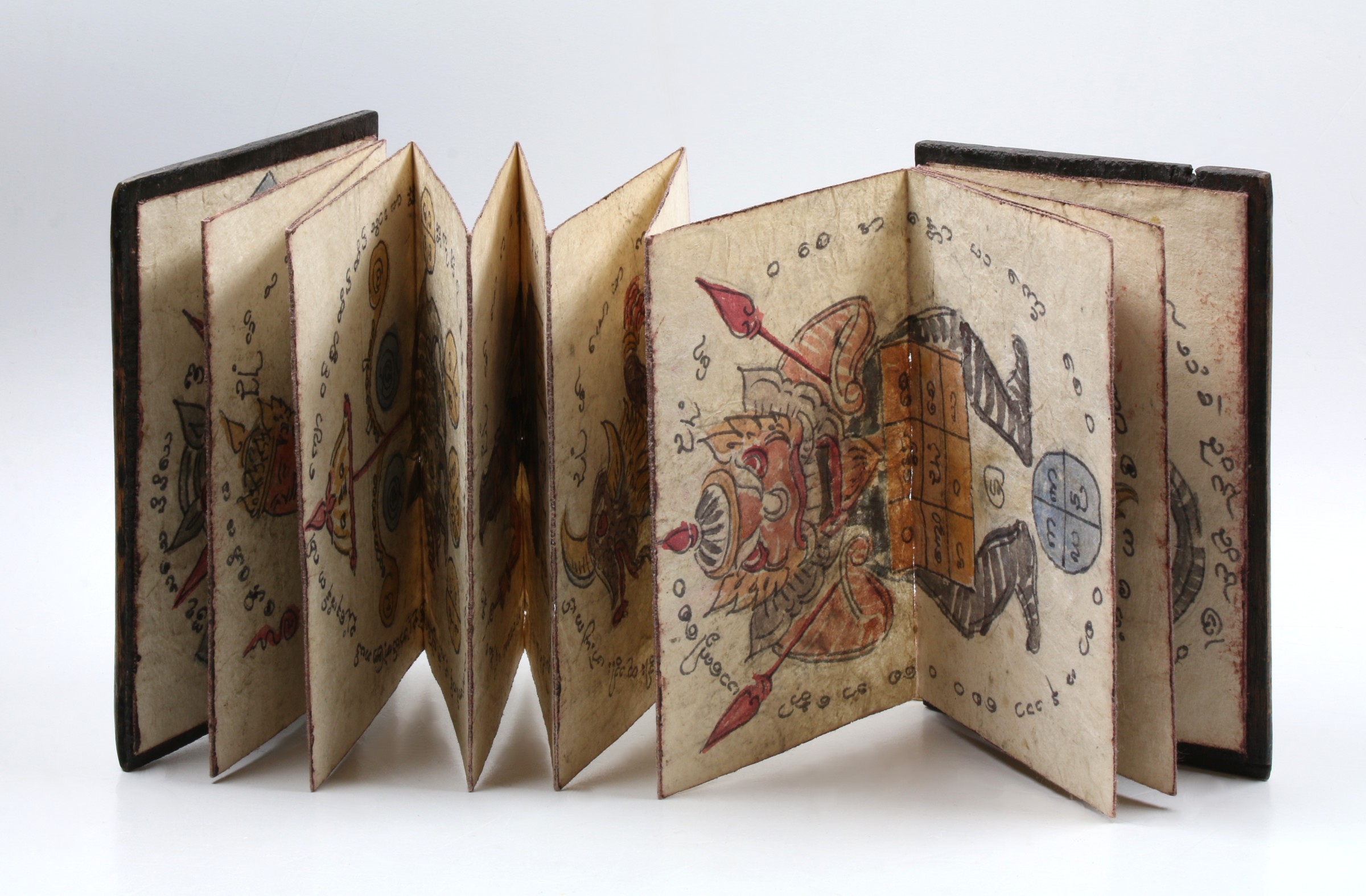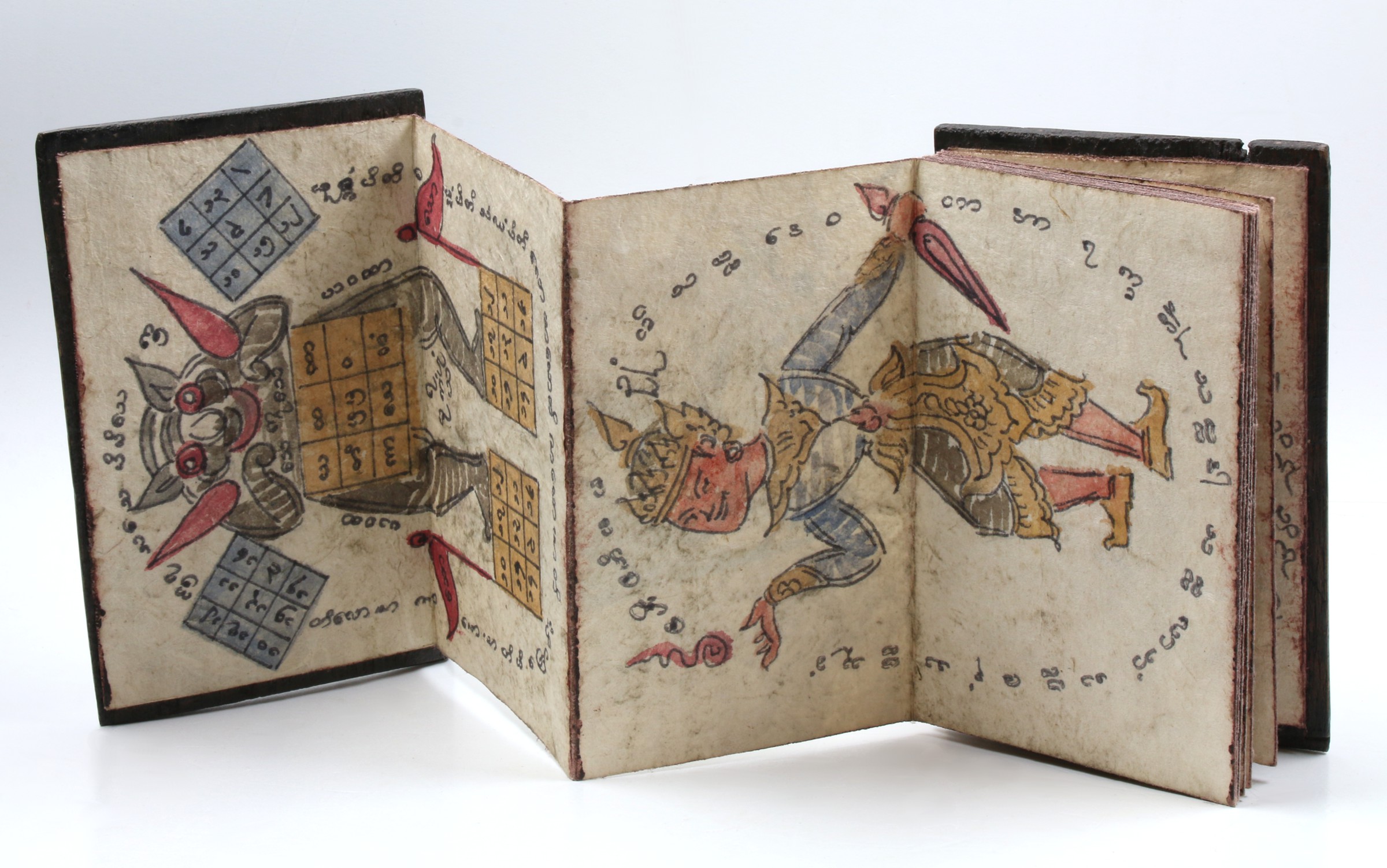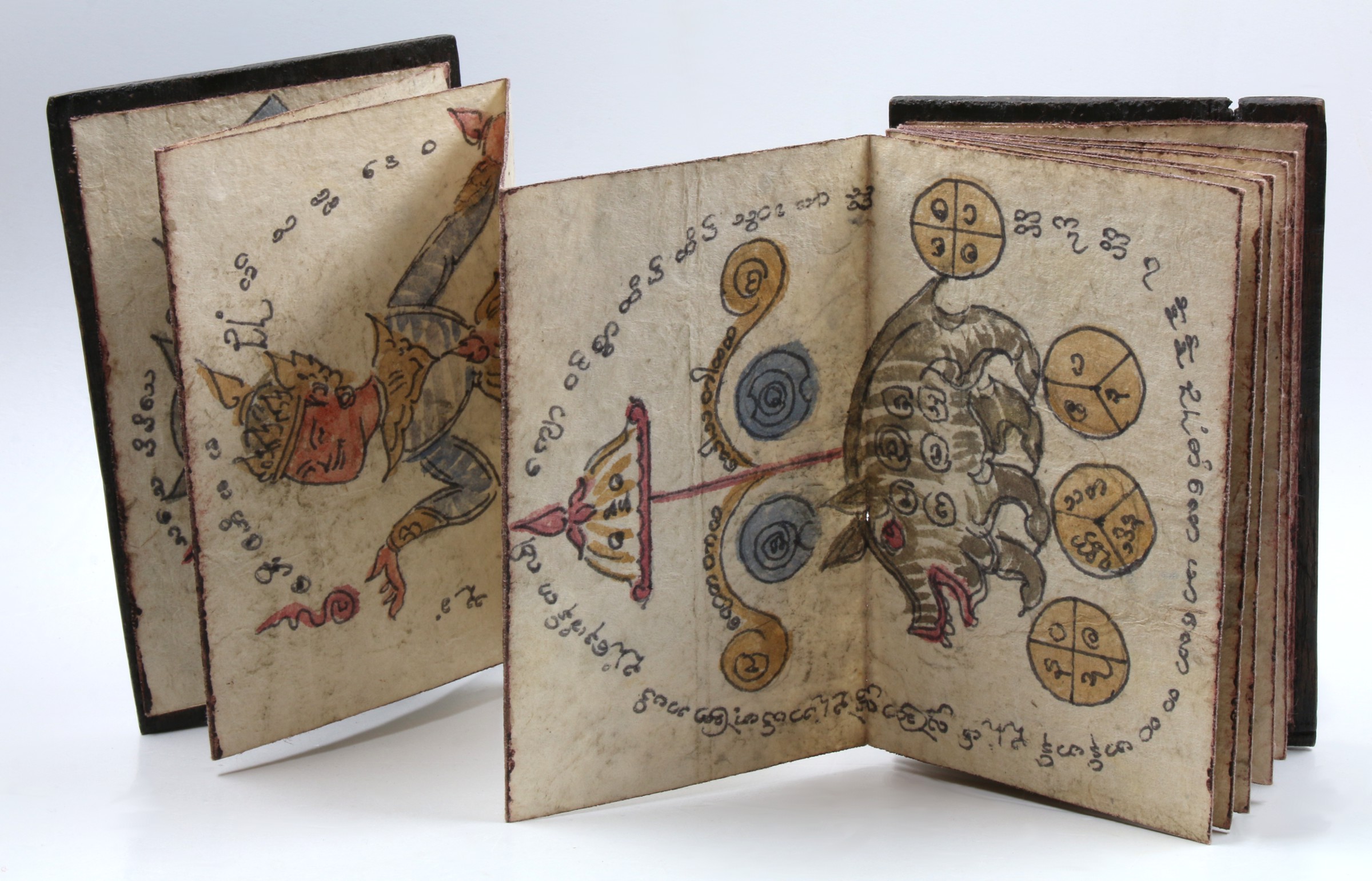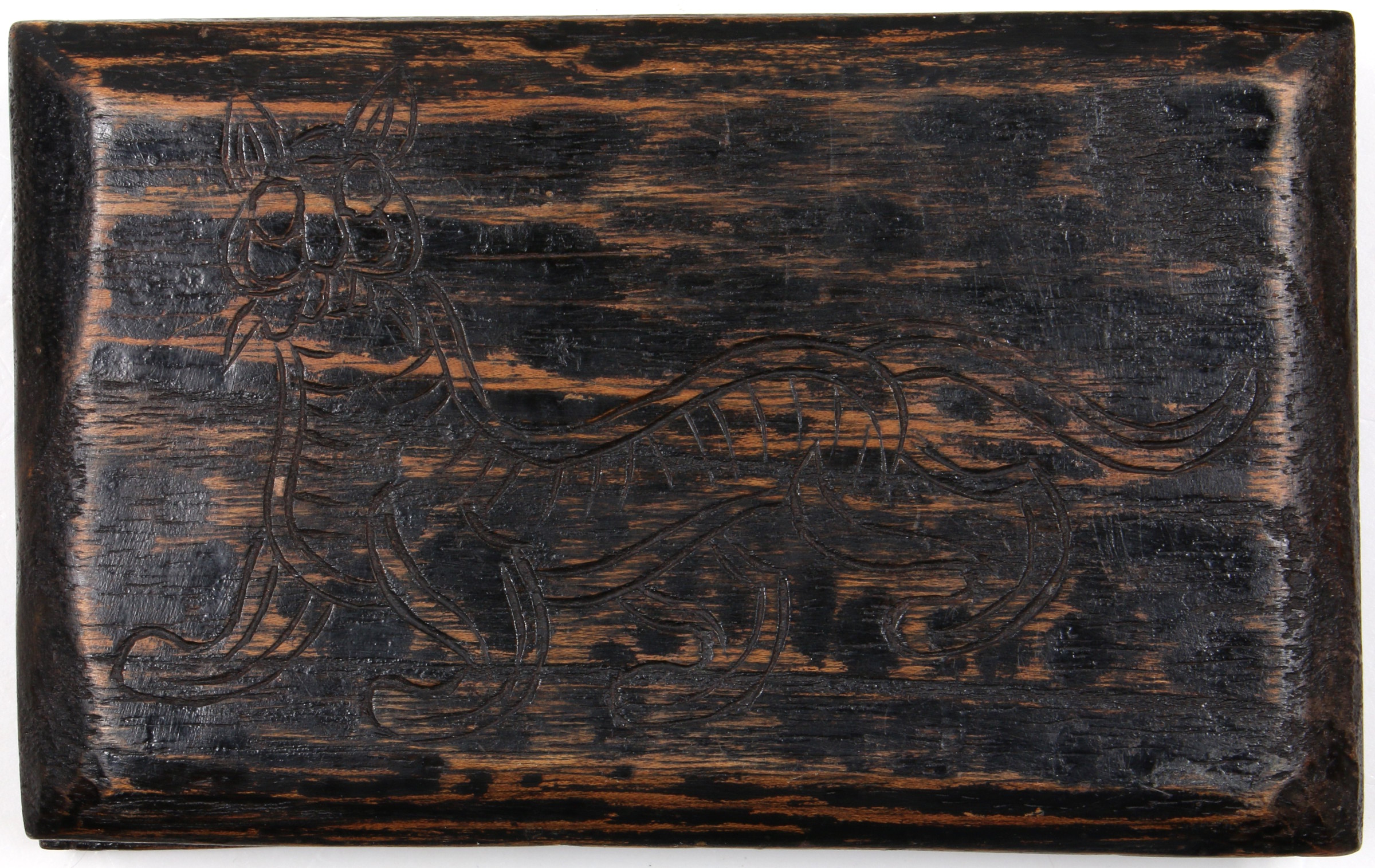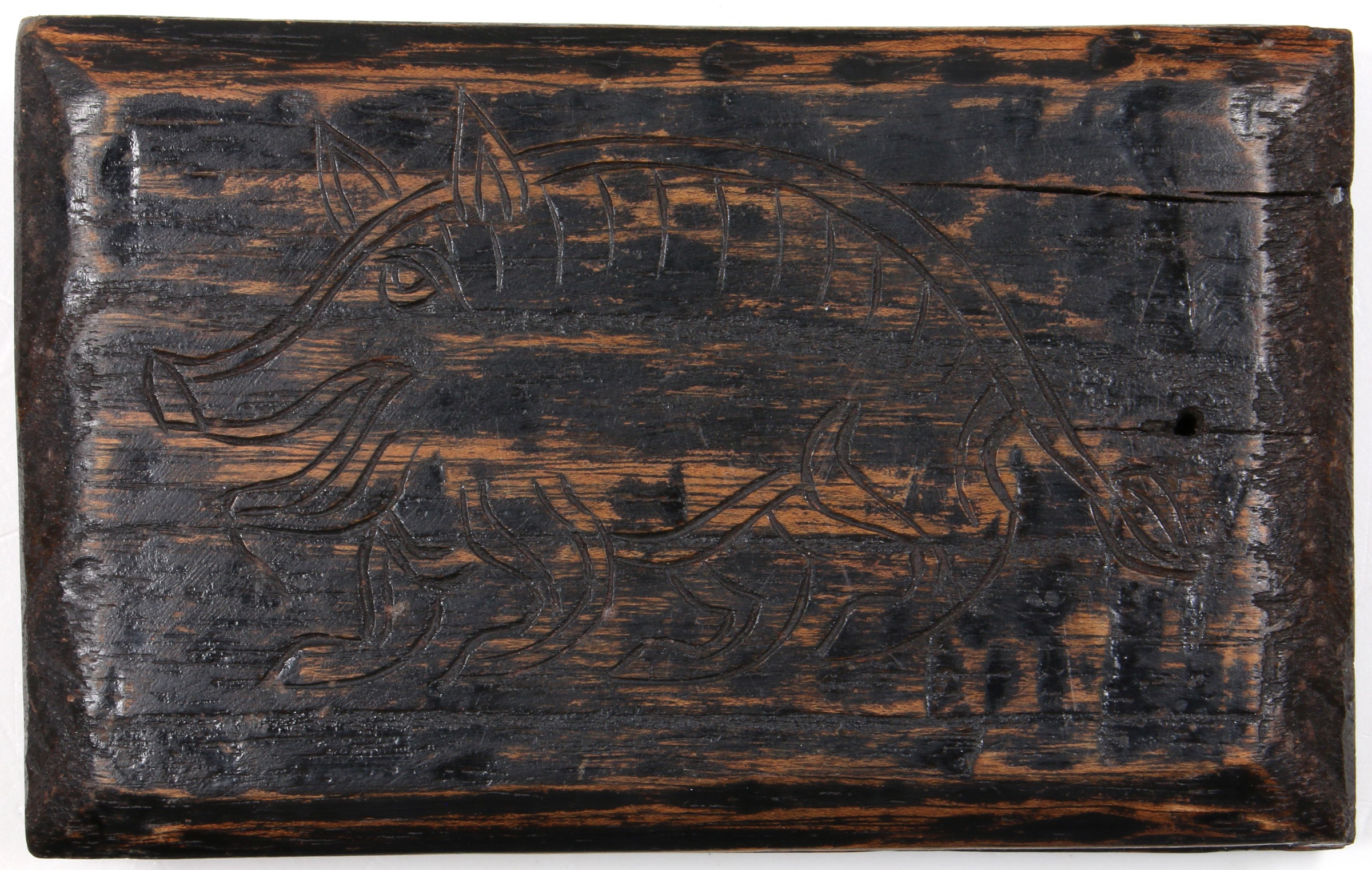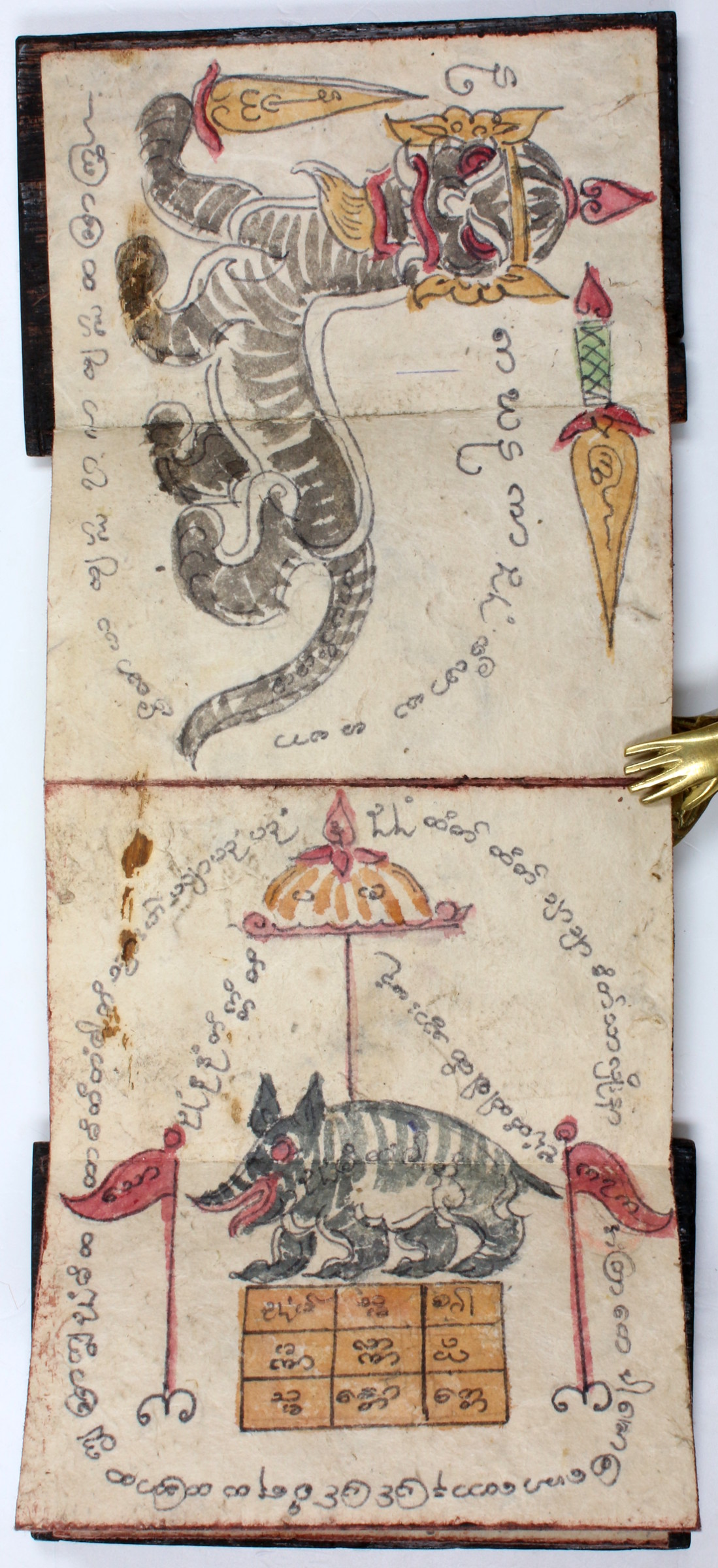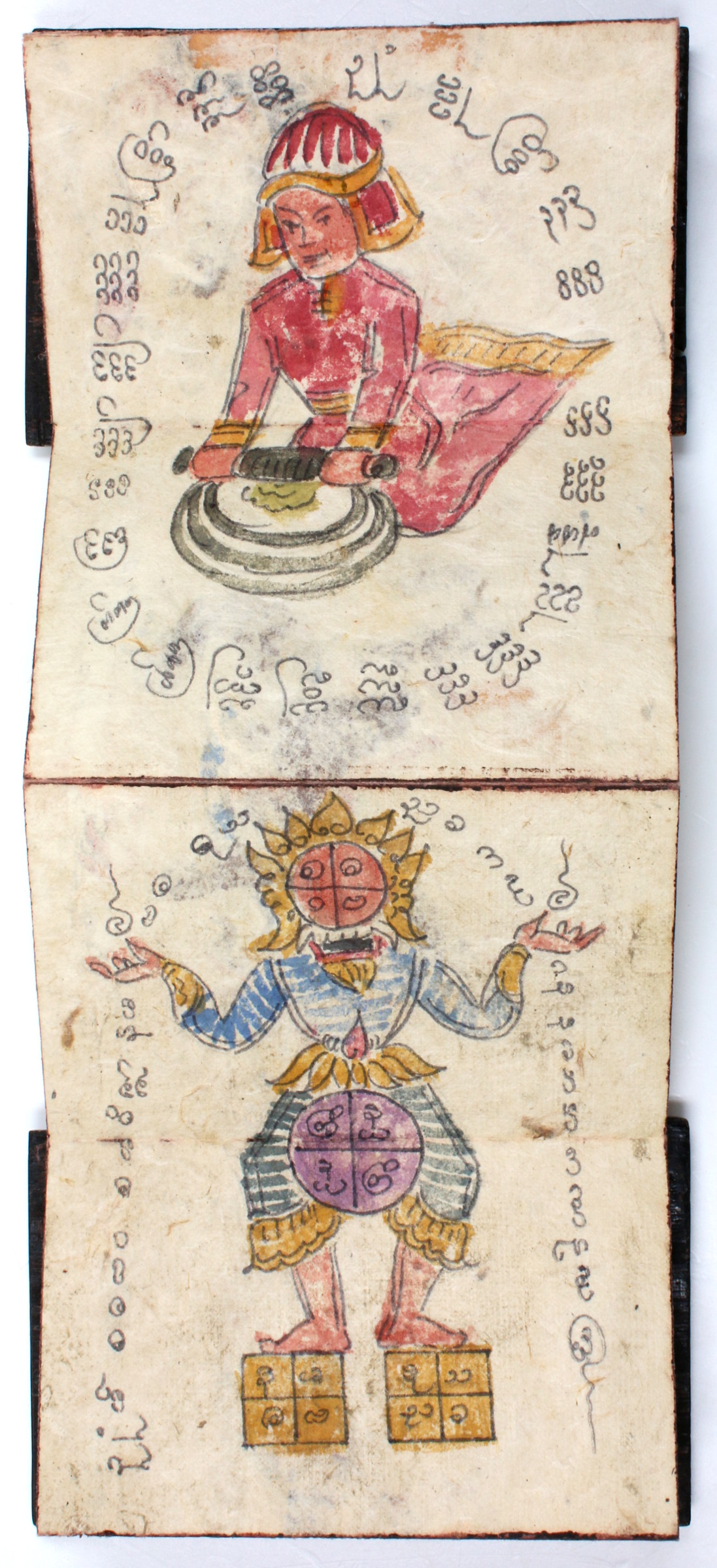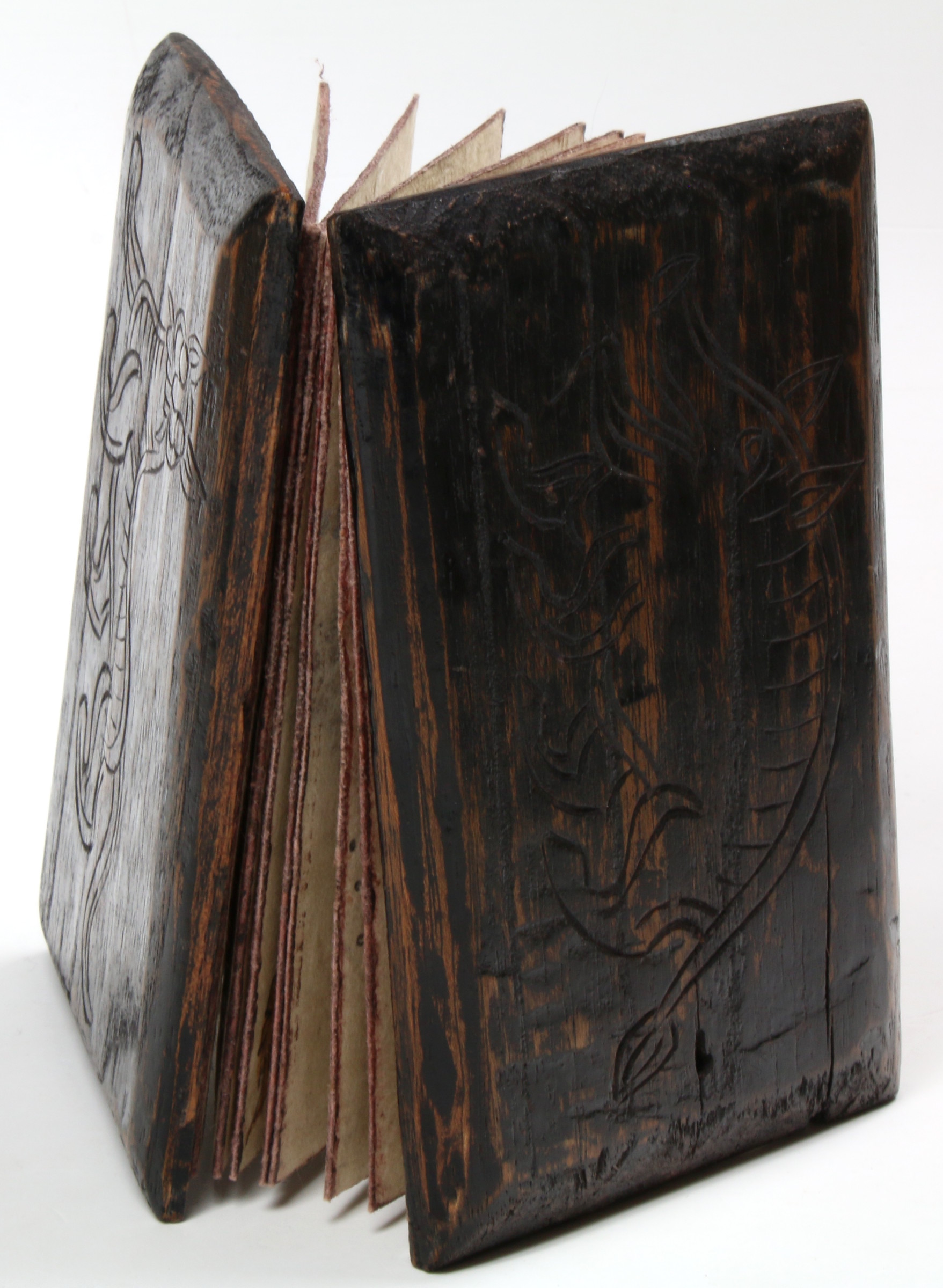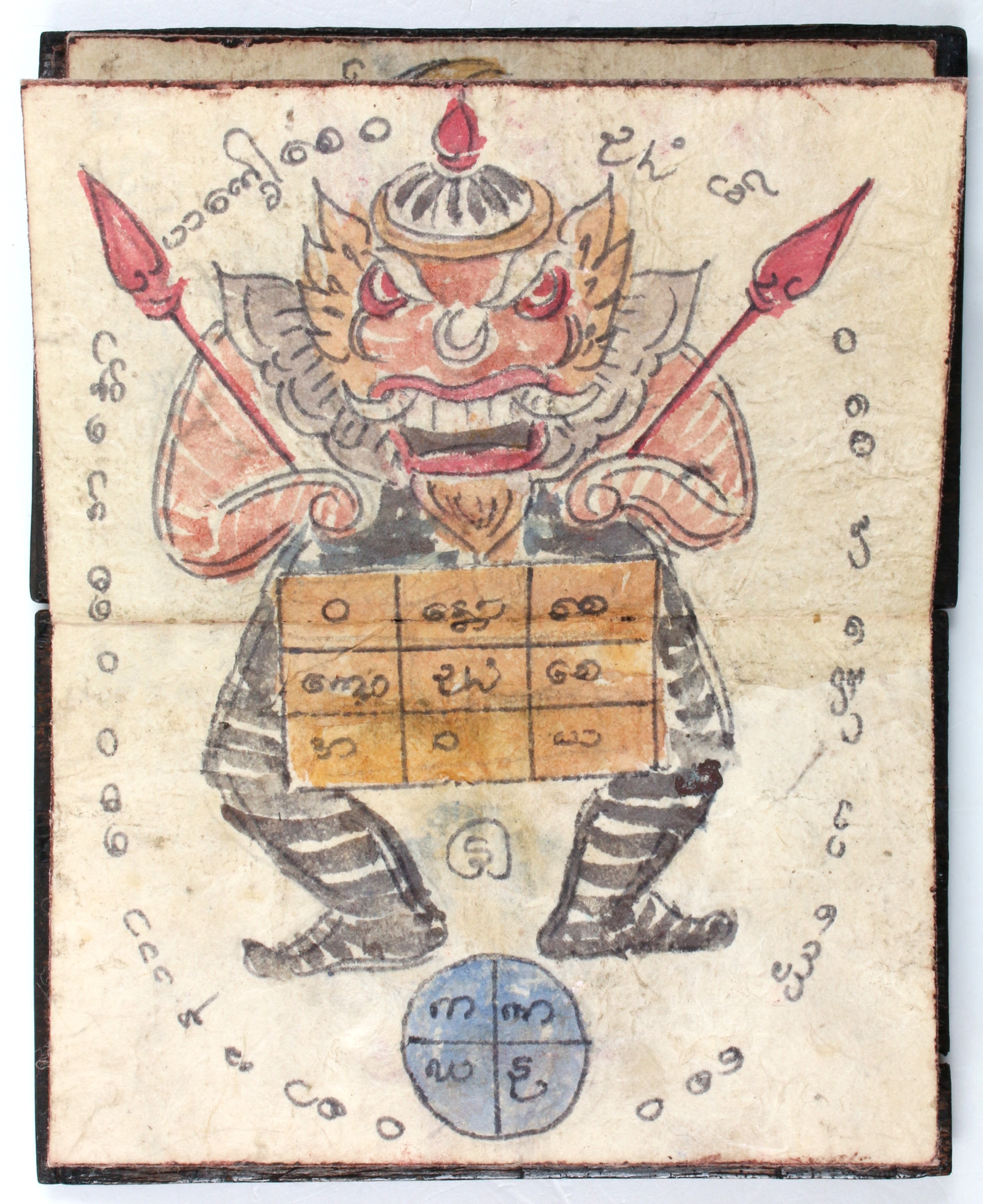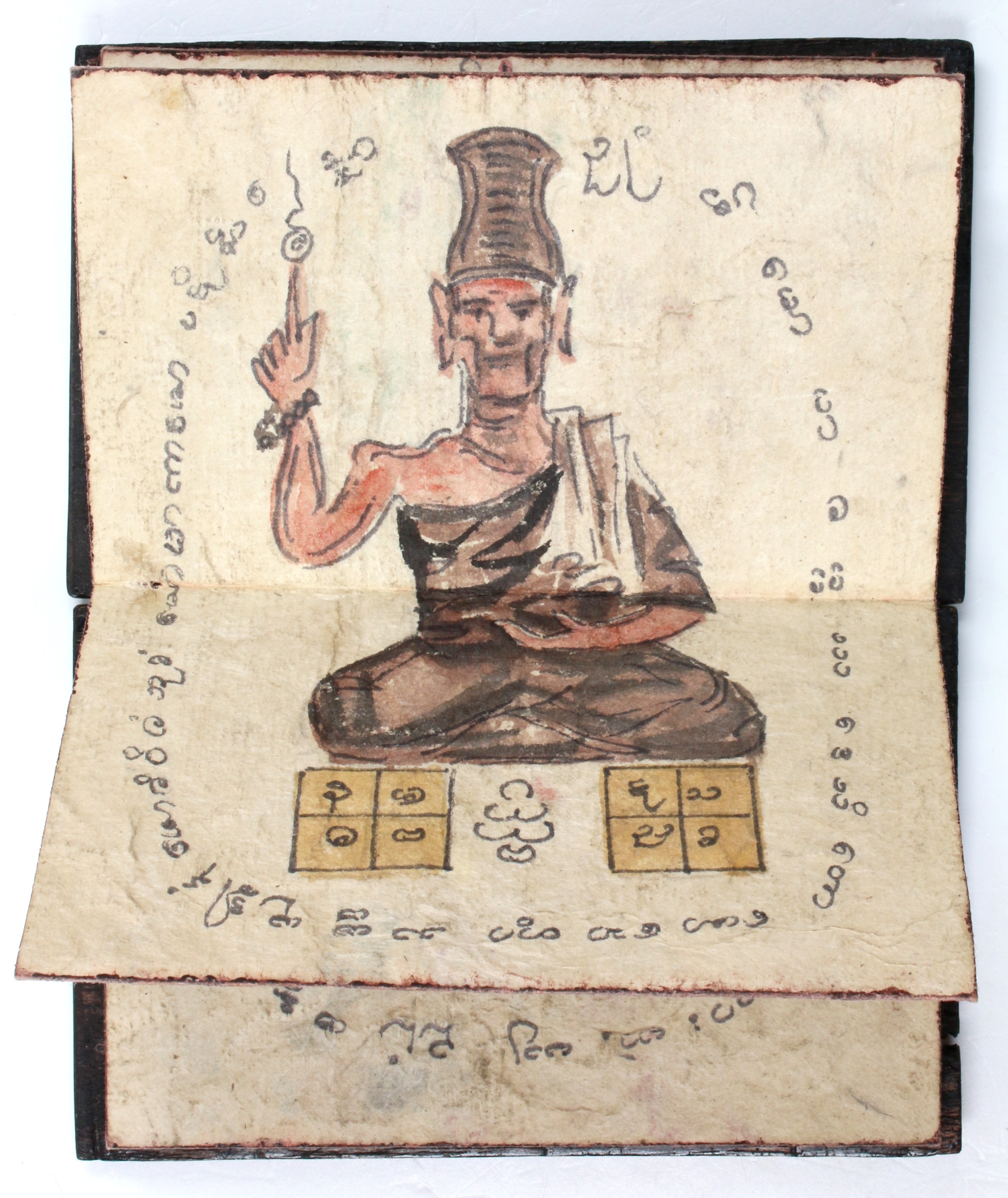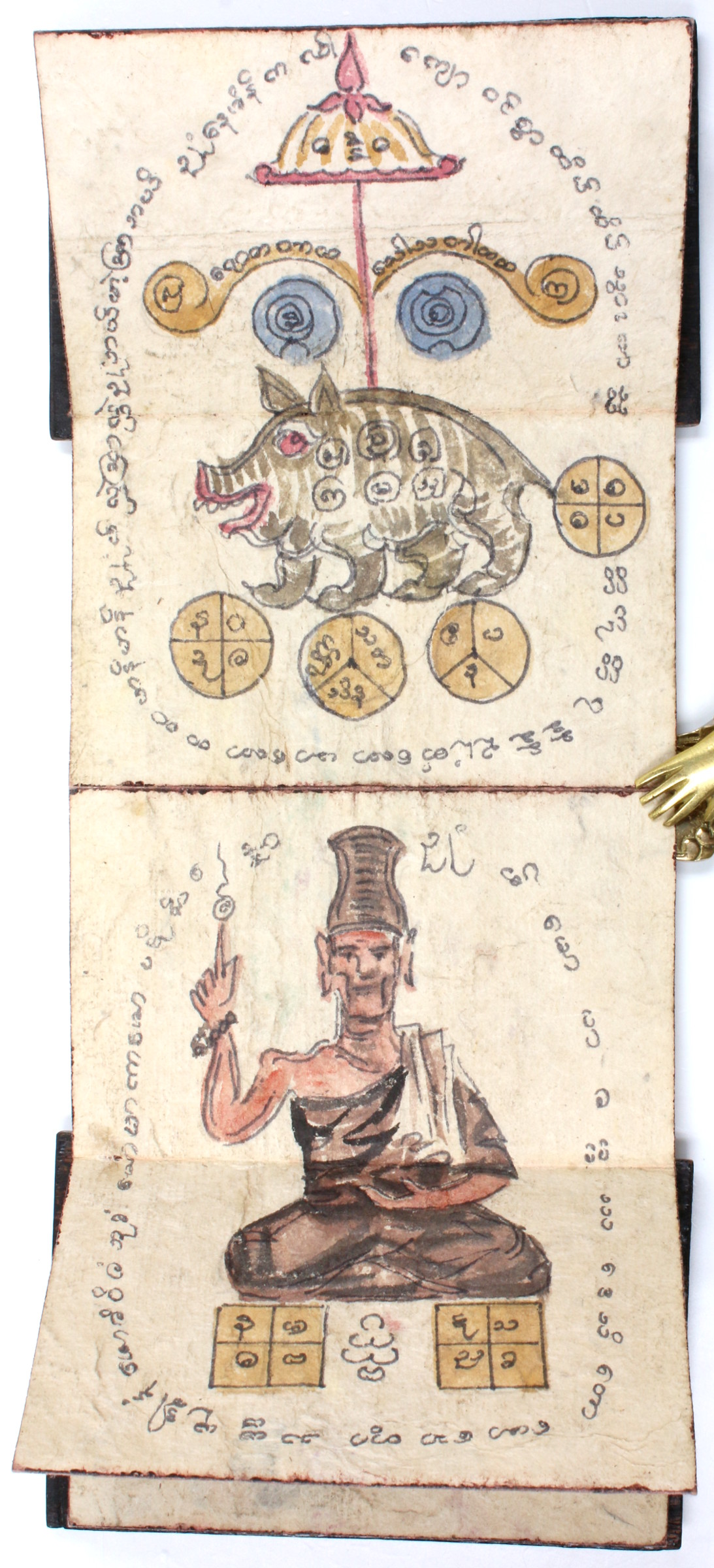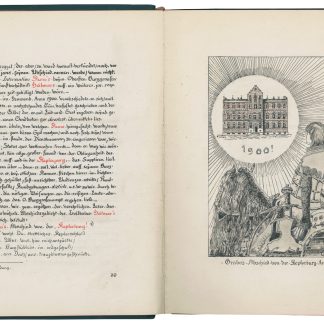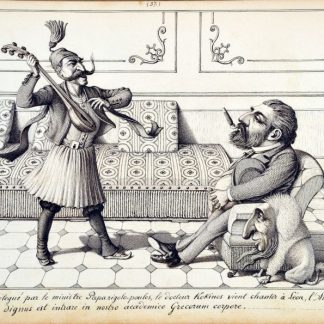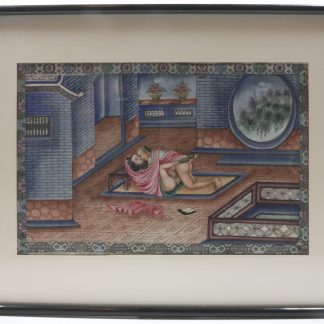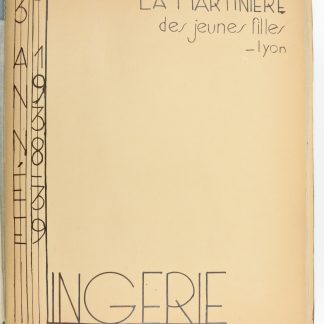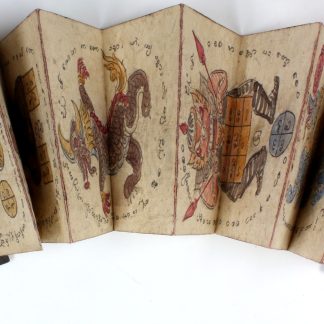Parabaik tattoo design book.
8vo (16.5 x 11 cm, 150 cm unfolded). 16 ff. With 16 hand-painted illustrations on saa paper, accordeon or concertina-style, double sided. Original wooden boards, hand-carved with a pig and a tiger.
€ 5.800,00
Rare and unusual manuscript tattoo design book from the Shan region of Burma (now Myanmar). This work is made from foldout mulberry (saa) paper with sacred symbols of mythology as well as numerology and sacred Buddhist texts.
The Shan are a South-East Asian ethnic group who live primarily in Myanmar, but are believed to have originated in China. The majority of the Shan are Theravada Buddhists. Tattoos related to Buddhism would often be created at temples by monks, thus ensuring that the wearer would be protected from harm. Other common Burmese tattoo motifs include cats of various sizes from house cats to tigers, dragons, geometric patterns, and figures from the history and culture of Myanmar and Buddhism. In their art, both Chinese and Buddhist influences are apparent, though the uniquely Burmese character of the Shan's style is undeniable. Interestingly, until the 20th century, tattooing was a widespread practice among the Burmese, even among women, and particularly among the Shan, who boasted one of the oldest traditions. "The traditional art of tattooing is deeply rooted in Myanmar’s history: from kings to commoners, tattoos were exemplars and devices of state bondsmen, masculine strength, feminine beauty, cultural identity and aesthetic appeal, while endowed as well with spiritual powers serving as protection from evil forces" (Moe Moe Oo).
Due to the Shan belief that tattoos imbued the wearer with spiritual strength or held magical significance, tattooing acquired great cultural importance, being practised especially during times of turmoil. As tattooing frequently took days, opium was the preferred anaesthetic, a fact whch, along with Western influences, accounts for the tradition dying out at the beginning of the 20th century. It has recently regained popularity.
One small tear to paper, otherwise in excellent condition.
Moe Moe Oo, Tattoo Art in Myanmar Culture: Special Reference with State Bondsmen of Cavalry Corps, 2016.

